“Joory” the young girl kept captive in Wonderland and “Annoub” the confident young Syrian boy, entertain young children.
When you accompany Joory on her adventures to Wonderland and think with Halimoo about all the possible things that could happen to you and what to do about them, you know the value of “Tayyarat Waraq” (Kite) magazine, reflected in its articles and pages. It excels in its presentation of materials in new and attractive ways for children, making them eager to read and interact.
Extract from Enab Baladi’s introduction to the first issue of “Tayyarat Waraq” in March 2013
With only modest resources, young activists and educational specialists launched the first magazine of the Syrian revolution in March 2013 in Damascus. The magazine was aimed at children and stimulating their senses as a way of reducing the impact of the war, creating a space to make up for their absence from school, and raising their awareness of their rights and duties. They named it “Tayyarat Waraq”. A few days later, this was followed by the launch of another magazine, “Zaytoon wa Zaytoona”, in Idlib province.
Magazines have been able to directly touch the minds of children in liberated areas of Syria and the internally displaced through a variety of cultural and scientific materials, academic competitions, educational activities and live interaction. They gave children a space to express their ideas and their future visions for their country, away from war and the sounds of bombing and death.
Magazines found success in their first years of publication but then started to face financial difficulties due the absence of financial support by organizations, which had greatly contributed to printing and publishing operations and facilitated access to the target audience.
“Zaytoon wa Zaytoona” and “Tayyarat Waraq” are the latest magazines to suspend publication after the Association for the Support of Free Media (ASML) stopped supporting the magazines. The association, also known as “Smart”, had been financially supporting a number of Syrian magazines dedicated to children for the past year.
The “Zaytoon” local newspaper was the first to write about the disappearance of the two magazines last week in a special investigation titled “The discontinuation of support ends the journey of children’s magazines”. The investigation identified the reasons behind suspension of the magazines’ publication and examined the development of press targeted at children in liberated areas, highlighting the reasons that led to its decline and the suspension of publication.
The investigation also tackled the impact on children living through the war and under the pressures surrounding them, and the negative impact of its disruption on the new Syrian media. The investigation was conducted through interviews with a number of managers of children’s print media publications and experts in the field of media and child development.
Some magazines suspend publication and others are struggling to survive
“93”: the last journey of “Zaytoon wa Zaytoona”
Though “Zaytoon wa Zaytoona” had not yet completed its fourth year since printing its first issue, it suspended publication at the beginning of this year as the Association for the Support of Free Media (ASML) discontinued its financial support to the magazine.
Enab Baladi spoke to the magazine’s editor, Somar Kanju, who confirmed that the main reason behind the magazine’s suspension is “the discontinuation of financial support, which covered printing costs as well as the salaries of the writers, illustrators and designers who were being paid a purely symbolic sum”.
“Zaytoon wa Zaytoona” published its first issue on 7 March 2013, which was included as an appendix to the “Zaytoon” newspaper published in the city of Saraqib. The first issue of this children’s magazine contained only four pages.
Kanju added, “As soon as the first appendix was published, we received hundreds of orders from children. We were surprised by the huge demand for the appendix and decided to expand it and make it an independent magazine for children. We increased the number of pages and printed more copies although we faced difficulties since there was no specialized publishing house back then.”
The magazine tried to make up for the lack of availability of Syrian and Arab children’s magazines, which used to reach most of the Syrian liberated areas. The magazine also tried to maintain children’s link with reading and writing after many schools were closed and many families migrated out of the cities towards farms and rural areas.”
The magazine was prepared with the help of writers and illustrators from various Syrian regions. “We accepted content from everyone as long it did not contain any political or religious views”, Kanju added. The magazine is free and distributed in target areas.
“Tayyarat Waraq” (kite) no longer “flying”
“Tayyarat Waraq” has been entertaining children for almost four years. It brought, on its paper wings, the values of cooperation, love, creativity and tolerance and tried to teach them to children. However, the magazine has also suspended publication due to the discontinuation of financial support.
“Tayyarat Waraq” is considered the first print children’s magazines and tried to communicate with children, who are the biggest victims of the war, in order to take them away from the conditions they are living through and their effects. It also tried to surround them with positive principles and values through which they could look forward to a better future.
Asma Balagh, the magazine’s editor, attributes the discontinuation of the magazine, which is aimed at children aged between 7 and 12 years old, to “finances, which are the foundation for supporting the printing of the magazine. We decided to stop the publication for now until new sources of financial support can be found for printing and to pay the staff.”
“Tayyarat Waraq” is one of the projects of Shabakat Hiraasat al-Tofoula (Guardians of Children Network). The magazine published its first issue on 3 March 2013 in cooperation with the Enab Baladi newspaper and Monadhamat al-Hirak al-Silmi al-Soori (the Syrian Non-Violence Movement). Back then, the magazine contained only eight pages and was included as an appendix to the Enab Baladi newspaper.
The very first issues of the magazine were published in the city of Daraya. One year later, it became an independent magazine and increased to 16 pages.
“Qaws Quzah” (Rainbow) stops at its 24th issue
“Qaws Quzah”, a monthly magazine published by the Ghussn Zaytoun (Olive Branch) organization, is aimed at children aged from 6 to 15 years old.
The magazine published its last issue, number 24, at the end of March 2016.
Enab Baladi was unable to get hold of the magazine’s staff to ask about the reasons behind its discontinuation.
“We don’t know when “Zawraq” magazine will stop”
“Zawraq” (Boat) was launched at the beginning of August 2013 as a bimonthly magazine containing 16 pages. It then became a monthly magazine with 32 pages.
The magazine’s editor, Mohammad Salloum, points out that “with no doubt, the magazine has been affected (due to discontinuation of its financial support) but, so far, we haven’t reached the point where we have to suspend publication… we have enough financial resources to continue for a few months. After that, we don’t what will happen. Unfortunately, children’s magazines are facing a bad situation overall.”
“Zawraq” is targeted at children aged between seven and 14 years old. According to Salloum, when it started, the magazine did not aim to present purely educational material but also “presented educational, recreational and informative content, with the help of the best children’s writers and illustrators.”
“Zawraq” prints about three thousand copies, which are distributed in areas of Aleppo and Idlib, as well as in al-Ghouta at different times, according to the editor.
However, the magazine suffers from a narrow distribution area and the inability to reach all children, since the Syrian regime considers any media published outside its areas, including , as being against it. The magazine also suffers from a “secondary” problem, which could be summarized in the shortage of illustrators, because of the “large” fees they request and the inability of the magazine’s management to pay them.
Without printing, “Teen Baal” looks for alternatives
The first issue of “Teen Baal” was printed in June 2014 as a monthly magazine for youngsters. So far, the magazine has published 29 issues, the most recent of which was published at the beginning of February.
The magazine contains illustrated stories on health, first aid and cultural awareness and the regions, history and traditions of Syria. The magazine also contains fictional stories and tales from different countries.
Eyad Kallas, one of the magazine’s managers, was fearful and cautious when talking to Enab Baladi, after printing of the magazine’s monthly publication, which was offered by “Smart”, was suspended because the Syrian regime stopped the organization’s printing project.
At the present time, the magazine is printing two thousand copies in Jordan and distributes them in refugee camps, in addition to “some copies that are printed on a small scale and used for personal documentation”, according to Kallas.
No comments by the funder
Since the middle of 2013, the Association for the Support of Free Media (ASML) has funded the printing of a set of new Syrian media publications such as the Enab Baladi, Souriyyitna (Our Syria), Oxygen, al-Jisr (The Bridge), Tamaddon (Urbanization) and Sada al-Sham (The Echo of al-Sham) newspapers.
However, the organization stopped supporting political newspapers due to “the end of a dedicated project” and started supporting Syrian children’s print media.
At the beginning of this year, the organization informed children’s magazines (Zaytoon wa Zaytoona, Tayyarat Waraq, Teen Baal and Zawraq) that its project to support their printing and distribution was coming to an end.
We were unable to reach the president of the organization, Chamsy Sarkis, who is originally from Syria and lives in France.
The organization did not issue any official statement announcing the move or explaining the reasons behind ending the support. However, when Zaytoon wa Zaytoona’s editor, Somar Kanju, shared an investigative report by “Zaytoon” magazine on Facebook, Sarkis commented on the post, saying, “I would have liked this article to have reached another conclusion. First, the report says “Smart” and not “ASML”. Second, in this article, “Smart” is portrayed as being responsible for the lack of financial support for the project, while, in fact, the organization supported this project for years, as much as it could.”
What contribution did they make?
During the past few years of the revolution, children’s magazines have presented varied educational, recreational and cultural content for children to help make up for the lack of schooling and availability of other forms of communication such as televisions and computers (no longer available as they require a stable electricity supply). The absence of these activities could cause children to disconnect from their surroundings and may have an impact on their personalities and psychological state.
Somar Kanju, Zaytoon wa Zaytoona’s editor, says that magazines have given children the space to read, draw and share, as well as the motivation to imagine, think and communicate. The editor also pointed out that these magazines are widely read by children with the encouragement of their parents and their teachers at school.
“Zaytoon wa Zaytoona” was able to reach areas in Idlib’s countryside, the city of Aleppo (in which the magazine’s distribution stopped after al-Assad’s forces took over), and a few of the rural areas of Raqqa, Latakia and Hama. However, distribution in these three regions was interrupted due to security conditions, caused either by the Syrian regime or ISIS. The areas of distribution were subsequently limited to the province of Idlib and its countryside.
Asma Balagh, the editor of “Tayyarat Waraq”, says that the disappearance of these magazines will have a negative impact on children in the current conditions. These magazines tried to serve children in the best way possible and to communicate with them and make them feel important. The editor says, “Discontinuing these magazines is a deprivation of one of the child’s basic rights”.
According to Balagh, all children love and enjoy children’s magazines. “Children sent us a lot of contributions that they wanted to have published in our magazine, such as their drawings, reflections and short stories. They were included in a special section in the magazine.”
During its journey in recent years, “Tayyarat Waraq” sought to present content that enriches children linguistically and visually through the stories they read and drawings they see.
The magazine was also concerned with the psychological aspect of the child. It presented material such as games children release their emotions to help and tried to raise children’s awareness of their rights and duties and support their social skills, in addition to the magazine’s recreational and entertainment sections.
Ghada Moatarmawi, an Editorial Assistant at “Ataa” magazine, which is still being published, considers that “children’s magazines, aside from being an educational medium, are practically the only means of entertainment for Syrian children during the war. Children in the camps and internal regions do not have the forms of entertainment that are usually available in normal conditions.”
Moatarmawi also pointed to the fact that many children’s institutions and centers that distribute the magazine have contacted the magazine to request to use its educational content as material for children’s courses.
We are ready to work for free … but what about printing?
“The only solution to bring the magazines back into print is long-term funding to cover the costs of printing and pay the writers, illustrators and designers, as well as the costs of distribution”. With these words, Somar Kanju, Zaytoon wa Zaytoona’s editor, responds when we ask what solutions the magazine’s management is looking at. Kanju also confirmed, “We are currently looking for organizations that could support us”.
He also explains that “a lot of writers and illustrators were ready to work for free to support the continuation of the magazine. However, the big obstacle remains the costs of printing and distribution.”
Mobile application
According to Asma Balagh, the editor of “Tayyarat Waraq”, the magazine is “currently trying to obtain support for the magazine and to develop its content so it can return in a new form”. However, Balagh pointed out a new method that could reduce the effects of the magazine’s suspension, “We are trying to create a mobile application for smartphones as an alternative, since the application can reach a larger number of children and doesn’t involving printing and distribution costs.”
“Creating” a budget
According to Eyad Kallas, one of the managers of “Teen Baal”, the magazine also experienced the same difficulties faced by most of the other magazines. “We are still looking for a solution for printing inside Syria, although we lack the budget. We are trying to create it in any way possible.”
Along with the financial difficulties, the magazine has experienced other pressures. The section on Syrian mythology, which portrays the “old Syrian gods” as part of Syrian heritage, has been removed. Kallas explained that “the Brotherhood of al-Manhaj” objected to this section and stopped it. They didn’t allow distribution of the issue that was printed inside Syria back then, so we moved that section to another part.”
Kallas added, “Despite all the difficulties, we will keep looking for alternatives, including the option of converting the magazine into a purely electronic format.”
Media expert: Syrian children do not have the luxury of owning an iPad
Ghalia Qabbani is a Syrian journalist who works at the “al-Sharq al-Awsat” newspaper and monitors new Syrian media in general, and in particular. She said, “If we talk about Syrian media publishing in general, we can see that it mainly relies on websites due to the difficulties in printing and distributing hard copies. This is due to many reasons – the high costs and the geographically fragmented target audience. This makes distribution difficult and printing unfeasible.”
However, she recognizes the efforts being made to overcome these difficulties, “There are serious efforts within Syria but they were met with strict censorship and confiscation of print copies. I think Enab Baladi was the target of similar measures”.
From this perspective, Qabbani said, “How can children’s print media be created if children are geographically scattered among countries of refuge and in besieged and non-besieged areas within Syria? Can we say that there is such a thing as the “Syrian child” or “Syrian children” when they have different psychological and social experiences and different memories? If we can avoid the difficulties in publishing and distribution by publishing electronic copies, even with this option, does every Syrian child have the luxury of owning an iPad or a laptop to be able to read their own magazine?”
The media professional also explained the difference between “children in refugee camps, in areas under siege and those living in Germany, Sweden, Turkey or other places. Given these differences, it seems very difficult to launch Syrian under these circumstances. However, it could work if local projects are established targeting specific areas such as refugee camps in Lebanon, Jordan or Turkey, even if they are low-cost and use a simple model… It’s a difficult dream to achieve, like many other cultural projects in Syria and surrounding countries.”
Magazines still in print await their fate
Although most children’s magazines have been discontinued, some are still “alive”. They are observing the fate of their fellow magazines that are no longer in print and looking to their own future and whether they can continue or not, or perhaps resort to the new electronic alternative. These conditions threaten to destroy this kind of Syrian journalism, which falls under the umbrella of the “new media”.
“Ataa”: a “quarterly” aiming to become “monthly”
“Ataa” is issued every three months by “Ataa Association for Relief and Development” and targets the age group between nine and 15 years old. It has issued five issues, in addition to its test issue. Ghada Moatarmawi, an Editorial Assistant at the magazine, told Enab Baladi that it is distributed in Istanbul, Hatay, Urfa, the countryside of Aleppo and Idlib, and border camps in Idlib’s countryside. The test issue was also distributed in Jordan, taking the number of copies distributed to one hundred thousand.
When we asked about the magazine’s views on the current situation of children’s print media, Moatarmawi says that “stopping these magazines means depriving children of entertainment and education. We are trying to get support to continue the magazine and make it monthly. With the help of Allah, we will carry on giving”.
“Hantawi” tries to make it up to children
“Unfortunately, a number of magazines that were published in the past have stopped since around one year. Maybe because of the donors’ policies or the lack of donors for these magazines, and the lack of an alternative solution”, said Erwa, activities supervisor for Hantawi magazine.
Hantawi is issued on a monthly basis and printed and distributed inside Syria, around the camps in the countryside of northern and southern Idlib of Aleppo, according to Erwa. It is targeted at 11 to 16 year-olds.
“Children’s print media in Syria has witnessed several successful and outstanding magazines on the visual level and in terms of content. It is sad that these magazines have stopped due to reasons relating to financial support”, he added.
In an earlier survey carried out by Hantawi directed at the magazine’s target age group, they found that 80% of this segment inside Syria are either being recruited to join or are joining the armed struggle.
The magazine is trying to give children “a way to see the other side of life, especially as these kids were between four and eight years old when the revolution started. They did not have enough awareness, that’s why they are being targeted (for recruitment).”
Ghiras: it’s impossible to fill the gap left by discontinued magazines
“Ghiras” was the first children’s magazine issued in Aleppo in July 2014. It was issued by the Ghiras Foundation for Children’s Protection and Development and printed 27 issues. The magazine is targeted at children between the ages of six and 14 and contains diverse educational and recreational content.
Enab Baladi spoke to the magazine’s editor-in-chief, Faten Abu al-Laban, who said, “We recently issued two copies, one in Arabic and the other in Turkish to be distributed to Syrian children in Turkey. However, so far, it has not been successful so far and we do not know how long it will continue for.”
“The magazine currently covers areas of northern Syria and the northern border camps, as well as the countryside of Hama, Aleppo and Idlib, in addition to the Turkish city of Urfa.”
She added, “The magazine’s funding relies on the projects Ghiras Foundation runs on the protection and education of children. These have had the biggest impact on the magazine’s survival, as it does not rely on external funding.”
The children’s magazine includes a page that teaches children the rules of the English language, two pages of adventures and fiction and a section called “Do You Know?” containing miscellaneous content, as well as a page that deals with Syrian children who are affected by the waves of displacement and migration.
Abu al-Laban also said, “On this page, we write about the lives of Syrian children, either in the camps, at home or in any other temporary place of residence. We highlight the children’s suffering but we conclude it with a hopeful tone, so that the child is presented as the hero in the story. Our message is that despite the pain, struggles and circumstances, there’s hope in the end.”
According to the editor-in-chief, the magazine is facing many obstacles, mostly related to its distribution area, “We cannot expand the coverage. We can only reach the northern camps and sometimes the centers that we manage to reach.”
“Ghiras is not in competition with other children’s magazines but rather in a relationship of cooperation to cover children’s particular needs in Syria. The roles of children’s magazines are complementary in light of the absence of schools and education because every magazine covers a particular area. Children in that area only receive that magazine.”
Abu al-Laban lamented the discontinuation of some magazines, “because we can’t fill the gap they have left, whether geographically or physically. We hope to see more room for cooperation or that these magazines will come back stronger than before. The losers from this are Syrian children. They have no source of joy left other than magazines, which are like gifts for them.”
“Khutuwat Saghira” (Small Steps): We must pay attention to children’s experiences
The two magazines “Khutuwat Saghira” and “Hanin” began as volunteering projects within the Khutuwat for Social Development Foundation that works in the field of education and distributes five thousand copies of each magazine.
Hani Chouikh, an engineer, is one of the founders of the Khutuwat for Social Development Foundation and managing editor of the two magazines. He says, “Children’s print media was not a priority before the revolution, even for intellectuals. This is because children’s culture was marginal and limited to schools and the field of official education, which is considered to be a traditional type of education that does not leave room for applying knowledge in a creative way.”
“We have not seen a decline in print media targeting children. On the contrary, there were Osama and Shama magazines, as well as the emergence of many magazines, some of which have outstanding high-quality content. Unfortunately, in terms of circulation, the magazines do not reach large segments of the population because of problems relating to financing, as these magazines are distributed for free.”
Like other children’s magazines, “Khutuwat Saghira” is facing financial problems that prevent its team from printing and developing the magazine. However, Shouikh asserted, “The staff are hugely determined to continue as they realize the magazine’s importance in restoring some of the social values that the war destroyed and taking children away from the violence around them.”
He also called for the need to “give more importance to supporting these experiences as they have a role in shaping the character of the child, cognitively, spiritually and behaviorally”.
Who can Syrian children turn to for “emotional release”?
Several research studies emphasize the primary role of “children’s journalism” and assert that it is one of the tools for shaping childhood, as it has a great role in developing children mentally and socially and in forming their habits and transmitting values, information and ideas, as well as answering many of their questions”.
Children’s magazines play a role in the field of entertainment, awareness raising, education and psychological support, as well as in transmitting a spirit of hope, especially in light of the consequences of the war experienced in various parts of Syria. The war has damaged the daily lives of Syria’s people, especially children, who are the most affected.
On 21 October 2016, UNICEF published a report, which estimated that there more that 1.7 million Syrian children are outside schooling while another 1.3 million are at risk of dropping out.
In a previous interview with Enab Baladi, the media director of UNICEF’s regional office in Amman, Juliette Touma, pointed to a slight decrease in the number, which was over 2.1 million in 2015 but she agreed that “the number is still high, and the overall situation is not good”.
There are many factors that force children to drop out of school, including the escalating violence, displacement and rising poverty, coupled with the lack of resources in the education system.
According to a report by UNICEF, one in three schools in Syria are now unfit for use. This is either due to damage or total destruction, or because schools are being used for other purposes such as sheltering displaced people from other areas or used for military purposes.
Enab Baladi sought to explain the psychological factors that affect Syrian children in the liberated parts of Syria, after a large segment have come to rely on magazines as “an educational, recreational and cultural alternative”.
The therapist and psychological coach, Mahmoud Othman, says that “the main factor affecting Syrian children in light of the absence of publications that target them is that they resort to alternative options such as magazines aimed at adults or electronic devices, which cause more harm than benefit as they are not intended for children.”
Children’s magazines sought to create a special world for children that compensates for the absence of school from their lives by strengthening their reading and writing skills, and creative skills that fill their minds and are adapted to their age and mindset. These magazines also worked on training children in creative ways for letting go of negative emotions, along with nourishing their spirits with humanitarian and essential values at a time of conflicts and clashes.
“Journalism can have a big contribution in times of war and in light of the lack of formal education, through providing role models for children by way of meaningful stories and riddles that stimulate intelligence”, Othman added.
According to the psychological therapist, children’s interest in these magazines depends on the areas in which they are found, “I expect that children to use these magazines in places where there are electricity cuts and where electronic devices such as mobile phones and laptops are not used at all”, in addition to “low-income groups, who see magazines as a good means for recreation, passing the time and learning at the same time.”
Something repeatedly mentioned by many journalists we spoke to who work in children’s magazines is that these publications might make up for what children miss out on due to the lack of schools and the permanent instability in the liberated areas.
However, Othman, the psychological coach, considers that they “do not replace school. The latter is a complete system based on nurturing a child’s knowledge in different forms, apart from the interaction with classmates.”
He explains, “ can play a supporting role and can mitigate the effects of the lack of formal education by including various educational tools that develop the child’s cognitive and behavioral skills.”
The End of Specialized Print Media is a Big Loss
It is evident that he Syrian independent media landscape is not currently at its best and is working in complex and difficult conditions. These difficulties include how to reach an audience that is no longer present in a single, specific and interconnected geographic area due to forced displacement and emigration, as well as the dominance of the war on community life.
This makes media work using traditional methods impossible (such as distribution, access to the audience, regular publication and the absence of a local market that makes advertising and media investment possible).
While this is all true, the loss of certain types of specialized print media, and in particular those focused on children and offering them guidance and care in the areas of development and education, and occasionally therapy and psychological rehabilitation, is irreplaceable. Furthermore, this loss represents a setback for efforts to salvage what is left of childhood in Syria.
In this context, children’s print media serves many functions that are difficult to replace. When the UN was warning of the risks facing an entire generation of children because of the disruption of education due to displacement and emigration, as well as the severe damage to educational infrastructure (schools and facilities) due to the war, provided a realistic alternative that could be used to disseminate knowledge and education among children, in spite of its modest distribution and publication.
The loss of specialized media, including children’s print media, is likely to leave a vast vacuum that will be filled with media that is focused only on “political” affairs, however important they may be. To consider political affairs to be limited to disputes between political parties or analysis of political solutions is wrong. But the current reality indicates that the consequences of the disappearance of specialized media and press will be felt by Syrian audiences looking for alternative sources of information and knowledge, which they need to continue dealing with general daily affairs wherever they may be, which is no longer limited to within Syria. It is a huge loss.
if you think the article contain wrong information or you have additional details Send Correction
النسخة العربية من المقال
-
Follow us :











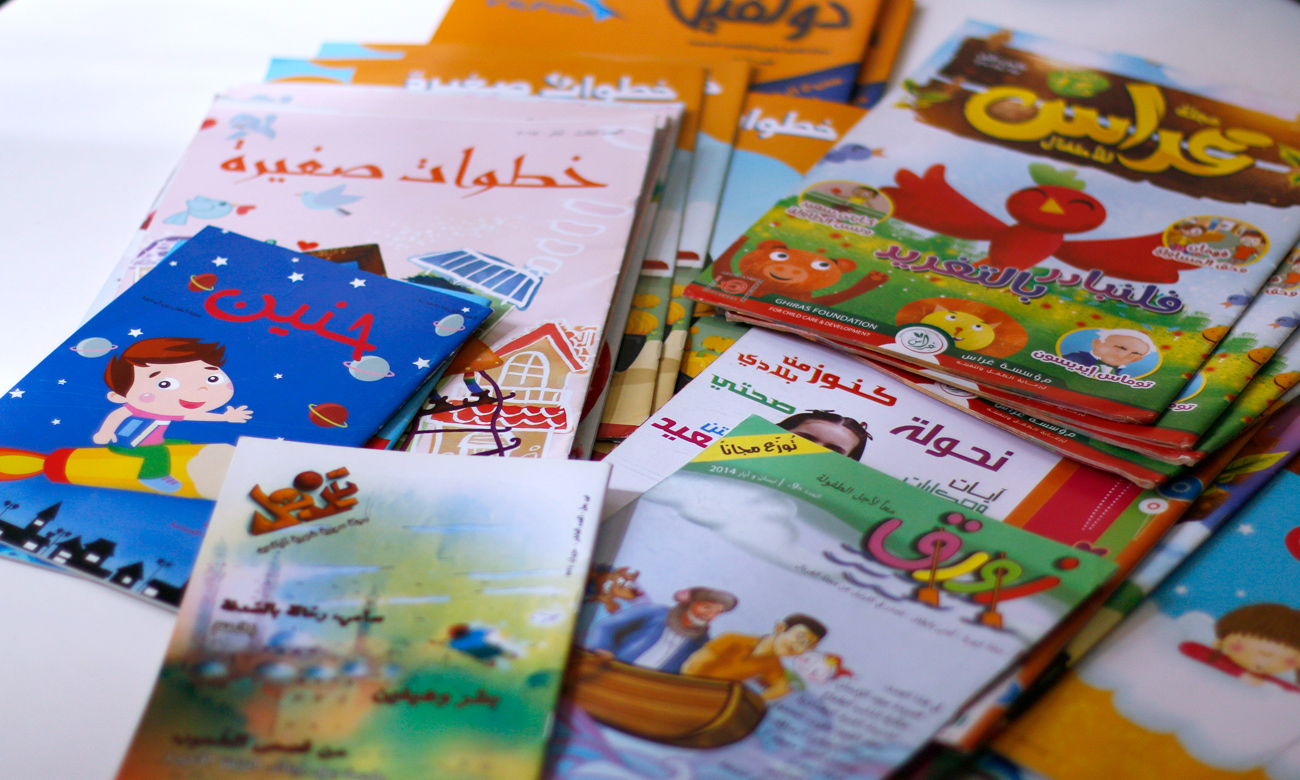
 Children’s magazines printed and distributed in Syria (Enab Baladi)
Children’s magazines printed and distributed in Syria (Enab Baladi)





 A
A
A
A
A
A

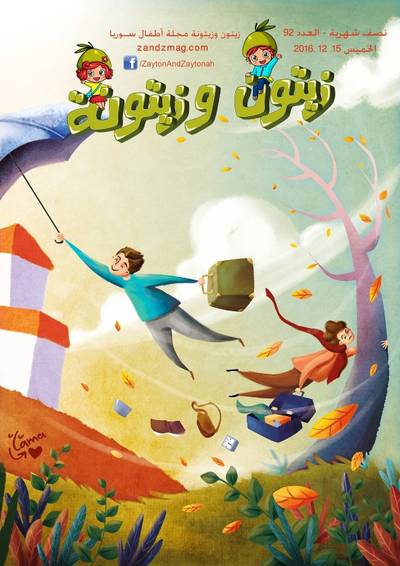
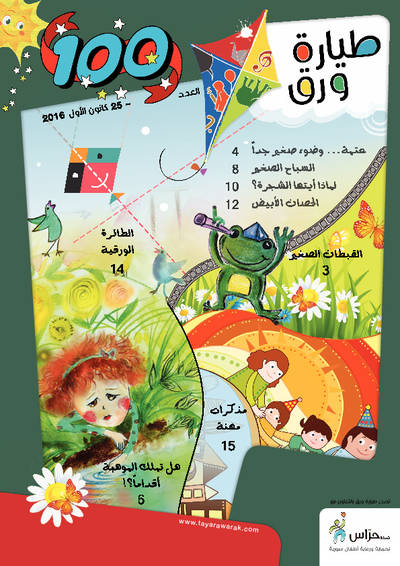

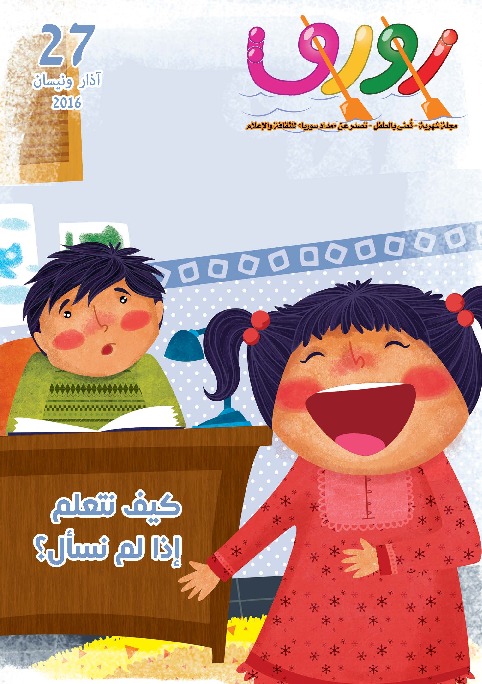
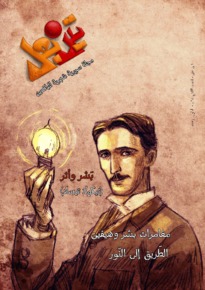
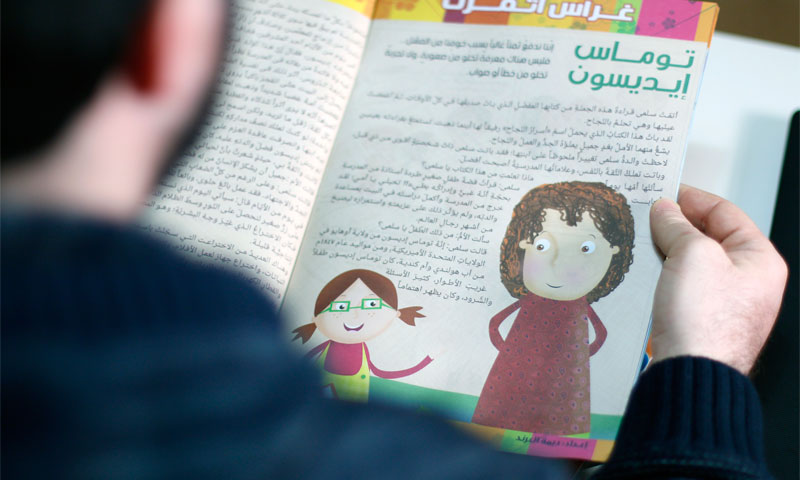
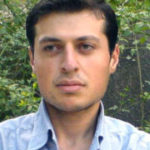
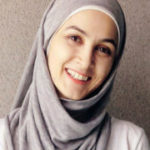
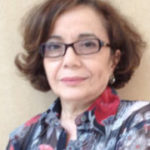



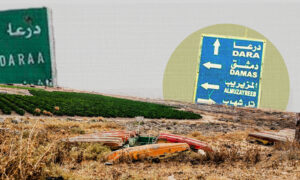

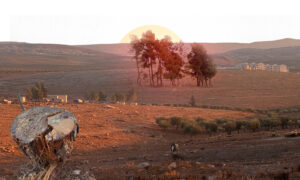
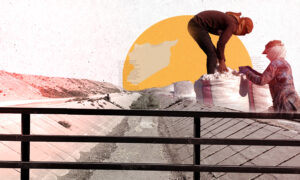

 More In-Depth
More In-Depth